Tolkien at the End of Time; Alchemical Secrets of The Lord of the Rings by Jay Weidner and Sharron Rose
Copyrighted Material
Tolkien at the End of Time;
Alchemical Secrets of The Lord of the Rings
By Jay Weidner and Sharron Rose
The Power of the One Ring
The chief power (of all the Rings alike) was the prevention or slowing of decay (i.e. ‘change’ viewed as a regrettable thing), the preservation of what is desired or loved, or its semblance. But also they enhanced the natural powers of a possessor thus approaching ‘magic’, a motive easily corruptible into evil, a lust for domination.’
-J.R.R. Tolkien from the Preface to The Silmarillion
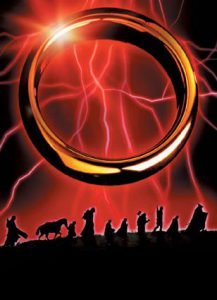 The Three Rings of Power were brought forward into this world through the Elves innate powers of creative envisioning for the distinct purpose of preserving beauty in the world. These Rings did assist in the slowing of aging and deterioration, but unlike the One Ring, they did not confer the power of invisibility. At the same time, in the depths of the subterranean fire of his Evil Kingdom, Sauron secretly forged the One Ring that held within it the power of all the Rings. The One Ring gave him ultimate control over the other Rings, for it granted him the ability to read the thoughts of anyone who used them, influence their actions, and in the end bind them to his will. Due to the fact that Sauron had the one Ring he easily gained control over the minds and wills of the largest part of the Númenóreans, which led to the downfall of this first great Kingdom of Men.
The Three Rings of Power were brought forward into this world through the Elves innate powers of creative envisioning for the distinct purpose of preserving beauty in the world. These Rings did assist in the slowing of aging and deterioration, but unlike the One Ring, they did not confer the power of invisibility. At the same time, in the depths of the subterranean fire of his Evil Kingdom, Sauron secretly forged the One Ring that held within it the power of all the Rings. The One Ring gave him ultimate control over the other Rings, for it granted him the ability to read the thoughts of anyone who used them, influence their actions, and in the end bind them to his will. Due to the fact that Sauron had the one Ring he easily gained control over the minds and wills of the largest part of the Númenóreans, which led to the downfall of this first great Kingdom of Men.
To cement his dominion over Middle-earth, Sauron had secretly forged the One Ring. But as Tolkien tells us, in order to do this he was “obliged to let a great part of his own inherent power pass into the One Ring.” Here Tolkien brings us to a subject that is much discussed in alchemical circles. That of the residual impact or imprint of one’s vivifying energy, life force or personal power (called the Ka by the ancient Egyptians) left on objects, places and even in the minds of those one has come into contact with in a way that will have a certain psychic influence upon them. By placing so much of his own Ka into the One Ring, Sauron was able to infect the minds, disturb the hearts and influence the actions of all those who possessed it with his evil intentions. His Ka, or psychic residue contaminates all who touch the Ring, binding them to him bending their will, twisting their minds. Like a vampyre from the ancient tales, Sauron, through the vehicle of the Ring, inserts within them the stain of his dark force and indelible fingerprint of evil. While the Ring may for a time, lengthen the days of a living being, slowly and inevitably it sucks up their life force and will to resist him. Tolkien tells us that “so great was the Ring’s power of lust that anyone who used it became mastered by it; it was beyond the strength of any will (even his own) to injure it, cast it away or neglect it.” 26
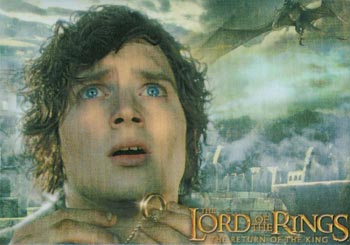 Gollum, Bilbo, Frodo and most likely all of the others that bore the Ring, made the happy discovery that they would not age as long has they had it in their keeping. Bilbo’s age catches up with him nearly immediately after he gives the Ring to Frodo. This is the ‘false immortality’, or as the eminent scholar and historian Robert Lawlor calls it, ‘premature immortality,’ that is both an indication of our desires for the Golden Age and a trap that will condemn our souls. This false immortality destroys the true gift of humankind, which lies in the possibility of the ultimate re-union with the Divine.
Gollum, Bilbo, Frodo and most likely all of the others that bore the Ring, made the happy discovery that they would not age as long has they had it in their keeping. Bilbo’s age catches up with him nearly immediately after he gives the Ring to Frodo. This is the ‘false immortality’, or as the eminent scholar and historian Robert Lawlor calls it, ‘premature immortality,’ that is both an indication of our desires for the Golden Age and a trap that will condemn our souls. This false immortality destroys the true gift of humankind, which lies in the possibility of the ultimate re-union with the Divine.
It cannot be overemphasized that Tolkien equates the Ring with the Machine. Today, at the end of the Fourth Age, the Ring encircles us like the fence that surrounds the unicorn in the famous French tapestry. Bewildered by its beauty and astounded by its power, it seduces us into its trap. Like the Ring, technology offers us a ‘false immortality’. Like Sauron and the corrupted wizard Sauruman, unashamed of their audacity, our technocrats promise us that this ‘false immortality’ equals freedom and life. Just open your eyes and look around. The purveyors of technology constantly promise a world of free energy and genetic miracles that will extend life and feed the world. Indeed one of their main promises is that they can eventually create an immortal human being. Technocratic philosophers even preach that it will one day be possible to download the human soul onto a microchip. This is the final seduction of the Ring or Machine that Tolkien knew would herald the end of this Age.
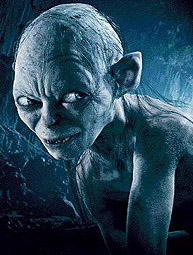 But one must realize that the Ring, or the Machine, is an addiction, just as evil is an addiction- and like every addiction- it is filled with denial. As soon as Boromir touched the Ring, he could not resist its call. The pitiful creature Gollum, whose name and nature is most likely derived from the legends of the golems created by the dark alchemists cum sorcerers of Seventeenth century Europe, is practically consumed by it. 27 Bilbo, for a moment turns almost demonic in his desire to keep the Ring and the closer he gets to Mt. Doom, the more the bright selfless spirit of valiant Frodo becomes weighted down by it and obsessed with it. This power of the Ring is clearly made evident with the weakening of Frodo’s body and spirit in each successive time he chooses to put it on his finger. In The Return of the King, he describes this experience,
But one must realize that the Ring, or the Machine, is an addiction, just as evil is an addiction- and like every addiction- it is filled with denial. As soon as Boromir touched the Ring, he could not resist its call. The pitiful creature Gollum, whose name and nature is most likely derived from the legends of the golems created by the dark alchemists cum sorcerers of Seventeenth century Europe, is practically consumed by it. 27 Bilbo, for a moment turns almost demonic in his desire to keep the Ring and the closer he gets to Mt. Doom, the more the bright selfless spirit of valiant Frodo becomes weighted down by it and obsessed with it. This power of the Ring is clearly made evident with the weakening of Frodo’s body and spirit in each successive time he chooses to put it on his finger. In The Return of the King, he describes this experience,
“No taste of food, no feel of water, no sound of wind, no memory of tree or grass or flower, no image of moon or star are left to me. I am naked in the dark, Sam, there is no veil between me and the wheel of fire. I begin to see it even with my waking eyes, and all else fades.”
It is the insertion of Sauron’s Ka into the One Ring and its subsequent invasion of and supremacy over the ‘free will’ of both Gollum and Frodo that in the end lead to Saurons demise. For even though Frodo, as he stands at the Crack of Doom, is overpowered by Sauron’s dark force embedded in the Ring and chooses to deny the quest and keep the Ring for himself, it is his pity, generosity and compassion towards the miserable creature, coupled with Gollum’s all-consuming greed that brings about the destruction of the Ring. With this destruction, comes dissolution of Sauron’s power.
In the ancient teachings on the Four Ages, as the cycle of time unfolds, the world and its inhabitants take on greater and greater density and therefore ‘magic’ localizes into more and more dense material. The Ring is the perfect embodiment for the densification of these magical energies. Indeed, as Frodo gets closer to Mt. Doom the Ring grows heavier and Frodo grows more tired. Frodo himself begins to show signs of corruption the longer he bears the Ring. This corruption carries its weight all the way to the end when despite overwhelming odds, Frodo, Sam and Gollum actually make it to the brim of Mt. Doom. At this point Frodo apparently abandons his quest to destroy the Ring. For now the band of metal has become a prison from which Frodo cannot escape. It is only through the greed of Gollum that the Ring falls into Mt. Doom.
And this is in essence Tolkien’s message. That even though the odds are overwhelmingly against us, even though greed and corruption consume our very souls in this Final Age of the cycle, even though everything appears to be lost and the forces of darkness are about to lay claim to victory, somehow, someway good triumphs. Tolkien appears to be saying that there are superior forces that have our interests at heart and that these superior forces are guiding our race and our species. These forces, that occupy what we might refer to as ‘upper earth’, wield their invisible hand to insure that Frodo succeeds and that we survive. Tolkien tells us that even the smallest of us is important. That creatures like the Hobbits Frodo and Sam can virtually alone defeat the powers of darkness and that they have an invisible ally that makes sure that they succeed.
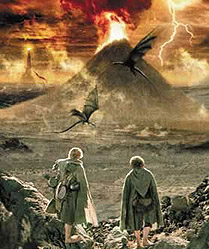 It is no coincidence that the film version of The Lord Of The Rings was released in 2001, 2002 and 2003. The Cross of Hendaye marks the Autumnal equinox of 2002 as the climax of history. Utilizing the Magical Alchemy of Light and sound, Peter Jackson’s filmic representation of The Rings Trilogy bookends that year perfectly. A few months before the initial release of the first film, the end of the Fourth Age was inaugurated by the destruction of the Two Towers in New York City. Fulcanelli warns us in Le Mystere des Cathedrales that the end of this Age will soon be upon us and that the northern hemisphere will be tried by fire. 28 As we are writing this article, the northern hemisphere is just completing its hottest summer in 500 years. As an anomaly this would not be disturbing, but the fact is, that in the last 11 years since 1992, each summer has grown hotter than the one before. Due to Greenhouse gasses, output from the sun, or perhaps just because it’s the end of the Age our planet is being burned up just like the Ring in the fires of MT. Doom.
It is no coincidence that the film version of The Lord Of The Rings was released in 2001, 2002 and 2003. The Cross of Hendaye marks the Autumnal equinox of 2002 as the climax of history. Utilizing the Magical Alchemy of Light and sound, Peter Jackson’s filmic representation of The Rings Trilogy bookends that year perfectly. A few months before the initial release of the first film, the end of the Fourth Age was inaugurated by the destruction of the Two Towers in New York City. Fulcanelli warns us in Le Mystere des Cathedrales that the end of this Age will soon be upon us and that the northern hemisphere will be tried by fire. 28 As we are writing this article, the northern hemisphere is just completing its hottest summer in 500 years. As an anomaly this would not be disturbing, but the fact is, that in the last 11 years since 1992, each summer has grown hotter than the one before. Due to Greenhouse gasses, output from the sun, or perhaps just because it’s the end of the Age our planet is being burned up just like the Ring in the fires of MT. Doom.
As a boy, Tolkien watched the beloved forest that surrounded his home in England being destroyed by the consuming maw of the Industrial Revolution. By the time that he left to go fight in the Great War, the smokestacks and fires of the hellish Iron Age had completely consumed the rustic village where he grew up. He then saw all of his childhood friends murdered and destroyed by the machine guns, poison gasses and barbed wire trenches of WWI. As he recovered from his wounds he sat beneath a giant oak tree in the South of France and conceived the genesis for The Lord of the Rings. He later told many writers, readers and critics that The Lord of the Rings was not an allegory for WWI, WW2 or anything in a modern sense.
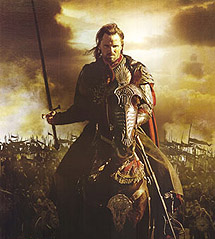 As Tolkien nursed his wounds he contemplated his personal experience of the terrors of this Age of Iron, death and destruction. His deep Catholicism and his intuitive artistic spirit combined to create this story of the end of the Third Age and the dawn of the Fourth Age. The Lord of the Rings also acted as a warning that our Age was also going to end soon. This is why Tolkien bristled whenever a critic or reader attempted to imply that The Lord of the Rings was an allegory. To Tolkien, Lord of the Rings was a mythical reimagining of the history of Europe 6,000 7,000 years ago.
As Tolkien nursed his wounds he contemplated his personal experience of the terrors of this Age of Iron, death and destruction. His deep Catholicism and his intuitive artistic spirit combined to create this story of the end of the Third Age and the dawn of the Fourth Age. The Lord of the Rings also acted as a warning that our Age was also going to end soon. This is why Tolkien bristled whenever a critic or reader attempted to imply that The Lord of the Rings was an allegory. To Tolkien, Lord of the Rings was a mythical reimagining of the history of Europe 6,000 7,000 years ago.
From the alchemical perspective of the cyclic flow of time, out of the darkness of this Age of Iron, a new Golden Age of humanity will begin. The ‘quality of time’ will be altered and in an instant our reality will be transformed. The true Masters and adepts of spiritual traditions from around the world will tell you that the seeds of this transformation exist within each and every human being, in fact it is for this reason that they call the human body the ‘sacred alchemical vessel of transformation’. For having been gifted by the Divine with ‘free will’, in every moment, we have the power to choose our own path. As Frodo, Gandalf, Sam, Aragorn and their friends did in The Lord of the Rings, we must open our hearts and walk the Path of the Light. Not because it is easy, but because we know that it is right. We are all Frodos, each and every one of us. Like Frodo, we have within us the potential for great deeds of courage and self-sacrifice. Despite everything, Frodo does destroy the Ring of Power. Sauron’s dominion is ended, the world is cleansed and a new Age begins. This is the beauty of Tolkien’s tale. Through this eloquent and powerful work of Art, Tolkien proves that he is of the lineage of great artists who have graced the Age of Iron. Steeped in alchemical principles and an ancient spiritual tradition that reaches back into the Third Age, both Tolkien’s and Jackson’s Lord of the Rings are harbingers of where we are from and also where we are headed.
Endnotes
1. For greater insight into the Alchemical/Tantric view of the unfolding of the Ages see Rose, Sharron, The Path of the Priestess; A Guidebook for Awakening the Divine Feminine (Rochester, Vt.: Inner Traditions International, 2003) pp.124-147.
2. Weidner, Jay and Bridges, Vincent, Mysteries of the Great Cross at Hendaye; Alchemy and the End of Time (Rochester, Vt.: .Destiny Books, 2003)
3. See Jenkins, John Major, Maya Cosmogenesis 2012, (.Santa Fe, NM: Bear and Co., 1998)
4. Fulcanelli, Le Mystère Des Cathédrales (Las Vegas, NV: Brotherhood of Life, 1984) pp.170-171
5. Rose, pp.131-134
6. Carpenter, Humphrey, ed., The Letters of J.R.R. Tolkien (Boston: Houghton Mifflin Company, 2000) p.246
7. Ibid, p. 212
8. Ibid, p.231
9. Fulcanelli, p.44
10. Johnson, K.R., The Fulcanelli Phenomenon (Jersey, Great Britain: Neville Spearman Ltd, 1980) p. 215
11. Tolkien, J.R.R., The Silmarillion (New York, Houghton Miflin Co. 2001) p. xii
12.Naydler, Jeremy, Temple of the Cosmos (Rochester, Vt.: Inner Traditions
International, 1996) pp.139-140
13. Fulcanelli, p.83
14. Ibid, p.14
15. For more on Tolkien’s perspective on Gandalf see The Letters of J.R.R. Tolkien,
201-203
16. For a description of the Golden Age see Rose, pp.128-130
17. Carpenter, Humphrey, ed., The Letters of J.R.R. Tolkien, p.361
18. Tolkien, J.R.R., The Silmarillion, pp. 41-42
19. Carpenter, Humphrey, ed., The Letters of J.R.R. Tolkien, p.176
20. In the story of Aragorn and Arwen from The Return of the King, Aragorn states,
“ I am the last of the Numenoreans and the latest King of the Eldar Days: and to me has been given not only a span thrice that of Men of Middle-Earth, but also the grace to go at my will, and give back the gift. Now, therefore I will sleep.”
21. Tolkien, J.R.R., The Silmarillion, pp.278-9
22. For more on Posnansy’s work on Teonaco and the discoveries of Atlantis in the Andes by J. W. Allen see Weidner, Jay and Bridges, Vincent, Mysteries of the Great Cross at Hendaye; Alchemy and the End of Time, Chapter 12, Catastrophe and Refuge, pp.372-374
23. Tolkien, J.R.R., The Silmarillion, p.xxiii
24. Ibid, p. xiii
25. Ibid, p.xiii
26. Ibid, pp.xx-xxi

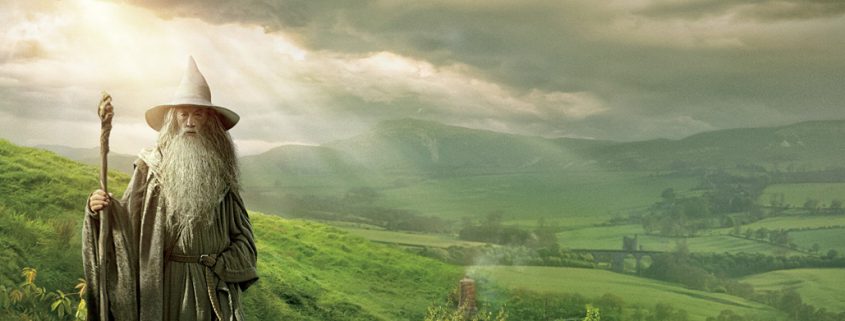
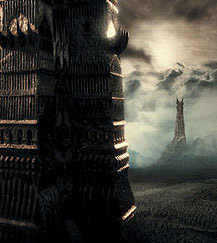


Leave a Reply
Want to join the discussion?Feel free to contribute!